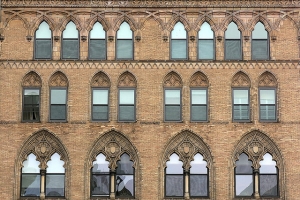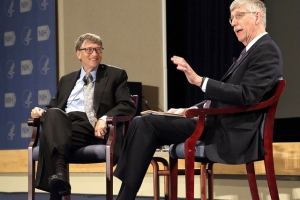Support migrant centric journalism today and donate

 Watch This Video
Watch This VideoCurrently a hot debate in American politics, and a sure-fire point of contention in the race for the next United States presidential election in 2008, is the subject of immigration reform.
So what exactly is it?
Some history
The subject of immigration reform encompasses the debate about securing America's borders, what to do with the millions of illegal immigrants already in the country, and the subject of temporary work visas and how many - if any at all - should be issued each year.
In the last decade of the 20th Century, immigration exploded in the United States, increasing by over 50%. Increasing alongside it was the public's desire to do something about the 7 to 8 million illegal immigrants estimated in the country at that time Currently it is estimated that between 12 and 13 million illegal aliens are resident in the United States.
Among the biggest supporters of immigration reform is George W. Bush. In 2004, Bush proposed a guest worker program intended to soften the blow of illegal immigration in the form of legitimizing a large section of offenders who contributed positively to the economy. He is also in favor of raising the H-1B visa cap, designed to allow companies to bring in foreign workers temporarily to alleviate skills shortages.
With the Iraq war, administration scandals, and accusations of domestic spying, instituting comprehensive immigration reform may be his one hope of leaving a lasting legacy of his presidency.
A bitter fight
Representative Sheila Jackson Lee's 'Save America Comprehensive Immigration Reform Act of 2005' followed Bush's guest worker program proposal.
Lee's position was that the government "cannot hide in the sand on the question of immigration." Her bill would legalize immigrants who have resided in the States for more than five years - provided they take English classes, serve in community service, and are of "good moral character". The bill would assist in the naturalization of children and increase eligibility and protections for immigrant family members.
In December of 2005, the House of Representatives Bill 4437 (H.R. 4437) was introduced by Representative Jim Sensenbrenner. The bill took a radically different approach to the problem of immigration from Lee's proposed legislation.
Among the provisions were measures such as building fences and walls along a 700 mile stretch of the Mexican border, criminalizing those residing in the United States illegally, as well as criminalizing the aiding of illegal immigrants, and mandatory detention of illegal aliens by federal authorities.
H.R. 4437 was passed by the Republican-controlled House on 15 December 2005 by a margin of 239 to 182. It set the stage for a deeply divisive and bitter political fight as the 2006 election year began to take shape.
In the aftermath, massive protests across the country took place in support of immigrants between March and May of that year, with generally much smaller counter protests taking place soon after by anti-immigration groups.
In May of 2006, the Senate passed a compromise bill that proposed a 370 mile fence to be built and that illegal immigrants already in the country would have a legal route to citizenship. It would also provide for 200,000 more guest workers per year.
All three bills stalled as the summer wore on and the political in-fighting came to a stale-mate ahead of the November elections.
The debate is not over
In the aftermath of the elections, there were vast changes in the political power structure of the U.S. Congress. It is now expected that a new bill, championed by Representative Ted Kennedy - backed by the new, Democratic-controlled 110th Congress - has a strong possibility of becoming law.
A lesser focus of immigration reform, but still a hot topic, are the H-1B visa caps.
H-1B visas are designed to allow companies to temporarily employ skilled foreign nationals to work within the US. Currently, H-1B's are capped at 65,000 per year, and competition for them is fierce. Many interests want the cap raised, mainly tech-heavy businesses that benefit from foreign talent.
Currently, the subject of raising H-1B caps has been picking up steam after recent articles by leading industry stake-holders such as Bill Gates, founder of Microsoft. His arguments have been embraced by individuals in government, such as Representative Orrin Hatch, who believes that "we've got to expand the H-1B program, as Gates and almost everybody in the high-tech world believes."
While the debate on U.S. immigration is far from over, there seems to be a light at the end of the tunnel. For those wishing to make the US their home, there may be some important changes on the horizon.
Related:
• Bush serious about immigration reform• US business gears up for immigration-reform fray
• Raising H-1B cap gaining support in US government
• US Republican party shuts down immigration reform debate
• Catholics call for 'humane' immigration policies in the US
• States in the US passing their own immigration laws
• U.S. immigration debate expands to both coasts





















